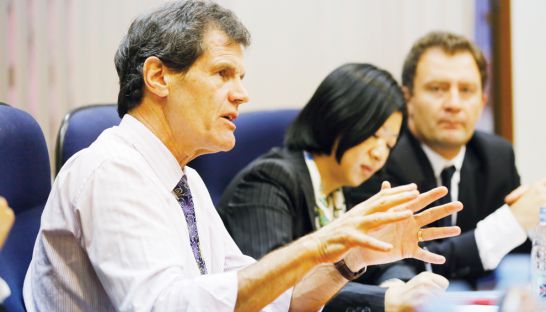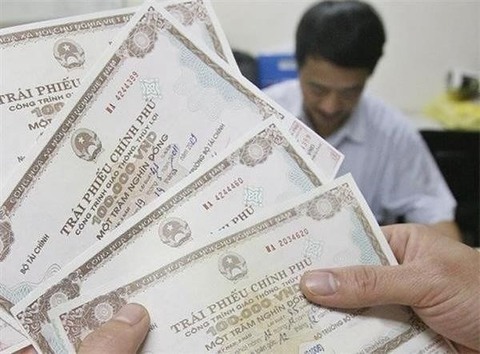IMF sees rapid credit growth as main risk to economy
IMF sees rapid credit growth as main risk to economy
Cambodia's economy continues to perform strongly, but rapid credit growth must be contained to reduce the risk of economic and financial instability, and to ensure a “soft landing” of the credit cycle, the International Monetary Fund (IMF) said in a statement issued yesterday at the conclusion of its annual Article IV consultation.

“[Economic] growth is projected to remain robust around 7 per cent for 2016-17, supported by strong garments exports, real estate and construction activity as well as the reduction in oil prices,” an IMF mission concluded following a two-week visit to assess Cambodia’s macroeconomic developments.
The team expects Cambodia’s current account deficit will narrow to 9.7 per cent by the end of the year, from 10.7 per cent in 2015, on the strength of garment exports and less reliance on imported electricity following the completion of major hydro projects. Meanwhile, inflation is expected to edge up to 3.2 per cent on rising food prices.
The IMF projected that economic growth would slow to around 6.25 per cent by 2021 “due to a gradual reduction in FDI [foreign direct investment], challenges in export diversification and a moderation in the credit cycle”.
While the outlook was broadly positive, the mission identified some significant risks.
“The main downside risk to the outlook arises from rapid credit growth, increasingly concentrated in real estate, which threatens to undermine economic and financial stability,” it concluded.
According to Markus Rodlauer, deputy director of the IMF’s Asia Pacific department, private sector credit growth averaged about 30 per cent annually over the past three years, while exceeding 50 per cent annually in the real estate and construction sectors. During this time, the credit-to-GDP ratio doubled to over 60 per cent.
Rodlauer said while a certain level of credit growth was healthy, the continued high pace of expansion was unsustainable and poses a significant threat to Cambodia’s long-term macroeconomic stability.
“We believe that the credit of the real estate sector is on a dangerous trajectory that needs to be slowed down,” he said. “The longer it takes [to do this] the more people that will be hurt when it stops.”
Rodlauer commended Cambodia’s central bank for implementing prudential measures aimed at ensuring capital buffers were in place in the event of a downturn – most recently by raising the minimum capital requirement of financial institutions and implementing a Basel III-compliant liquidity coverage ratio (LCR).
However, he said the IMF team felt more measures were necessary, though they should be imposed gradually to minimise shocks.
“The goal is to achieve a soft landing of the credit cycle,” he stressed.
The IMF mission also identified a number of external risks to Cambodia’s macroeconomic stability. They include a significant slowdown in China’s economy, an appreciating US dollar, weaker growth in Europe following the Brexit referendum result, and a sharper-than-expected tightening in global financial conditions.
The mission’s preliminary findings and recommendations will be presented to the IMF’s executive board for discussion and decision.















